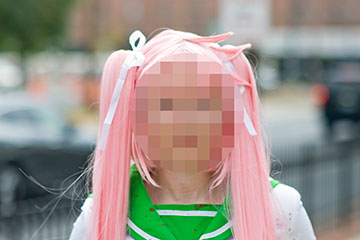As mentioned in the short terms list earlier in this book, bokeh is a word to describe the aesthetic quality of the blur that is outside the depth of field (where objects are in sharp focus). There are many factors that can contribute to good or bad bokeh. First and foremost is the lens aperture, but more specifically the shape and number of blades. Having a large number of blades, say 9 or more, and having blades that are curved will allow the lens aperture to stay perfectly round throughout the entire aperture range. If you sit down and examine an image that has small depth of field, you might start to notice shapes forming in the blur, especially when there are point-light sources in the background. The shapes and their respective borders will match the look of the aperture’s opening, so a perfectly rounded aperture will generate the same type of bokeh highlights and contribute to blur texture.

Another aspect of bokeh is the overall smoothness of out of focus objects. For example, if a tree with empty branches is in the background of your frame, you might see just a smooth outline or one with more well defined edges and colored halos around them. That being said, the ideal bokeh is usually smooth and featureless so lenses that produce odd sharpness in blur will be undesirable. Having color halos and sharp lines in bokeh is due to the quality and design of the glass inside your lens, so when looking for a new lens, try to examine sample images to see how the blur renders.
The main benefit of small depth of field photography (aka. blur maximization) is that you can isolate your subject in a pocket of blur. That way, you will be able to bring out a subject’s features to their utmost in showing what you wanted to portray as the primary focus. It is simply the act of isolating to define purpose, and especially helpful in tight crowded convention situations. With a specialized lens and the right technique, you can almost literally get the subject to pop-out of the frame compared to everything else around it.
Your lens and surroundings are key to maximizing the effect. In wide open spaces or in large empty convention centers, you will be able to have blurred backgrounds just by allowing for a large emptiness behind your subject that would be situated in the foreground near you. The two simplest rules related to maximizing blur are to keep your subject close to you and keep your aperture open as wide as you can. Another trick would be to use a long telephoto lens to compress features of the image and basically enlarge the background blur so that it appears to be smoother. Take note that you are not really changing the depth of field much with the telephoto lens, but you are changing how you look at your subject.
- Overview
- Who is this for?
- What is convention photography?
- My experience and experiences
- Why be a part of this?
- Practice, practice, practice!
- Networking
- Fun
- Photography terms primer.
- Equipment
- It is important or not depending on your ideals
- A basic setup.
- Decide how you want to make it work.
- Framing and composition
- Full body shots.
- Portrait style.
- Skewed angles.
- Face in detail.
- Plane of focus.
- Rule of thirds and golden ratio
- Available light photography.
- Strobe photography.
- Removing harsh light.
- Flash brackets.
- Bokeh and blur maximization.
- Histogram reading and image review.
- Post processing.
- Various schools of thought.
- Available software on your OS of choice.
- Ideas on how to improve your processing.
- Business cards.
- Social networking.
- Website
- The process from start to finish.
- My equipment.
- Ask the person first.
- Interrupting people.
- Constrained areas.
- Physical activity.
- Summary
